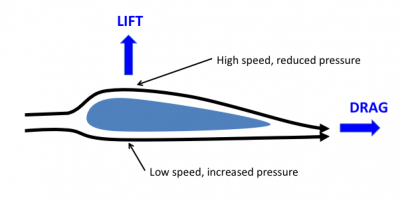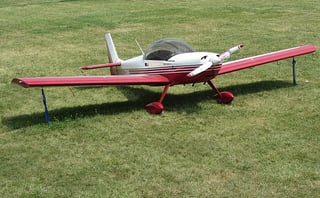Usual "explanation" of lift using Bernoulli principle
This theory is:
- Air over the wing is accelerated, its dynamic pressure increases with velocity.
- The static pressure over the wing decreases (due to Bernoulli principle, see below).
- The opposite occurs below the wing, static pressure increases.
- This results in an imbalance in static pressure between sides, and explains lift origin.

Source
Bernoulli's principle
Bernoulli's principle explains "an increase in the speed of a fluid occurs simultaneously with a decrease in pressure or a decrease in the fluid's potential energy":
$$p + \frac{1}{2}\rho V^2 + \rho gh = k$$
where $k$ is a constant. In the case of a wing, $\rho gh$ is so small it can be omitted, the principle can be stated:
$$p_0 = p + \frac{1}{2}\rho V^2$$
where $p_0$ is a constant known as total pressure, the first term is the static pressure, and the second one the dynamic pressure.
The explanation of lift ignores the imbalance of dynamic pressure
The previous theory ignores a similar, but opposite, imbalance of the dynamic pressure (as the total pressure is constant, the arithmetic sum of the two imbalances is also constant):
Why is the force created by static pressure put ahead in the explanation of lift, and the force created by dynamic pressure is not mentioned? If this force is ignored because not significant, why and how much is this force smaller?





